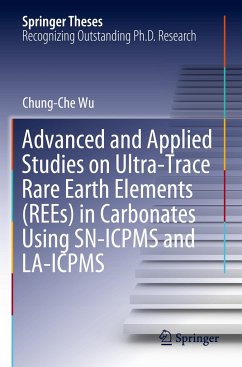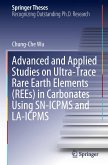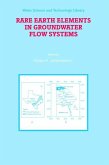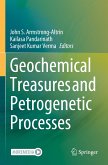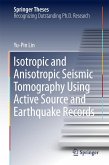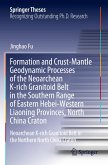This book provides two state-of-the-art quantitative techniques to determine ultra-trace rare earth elements (REEs) in natural carbonates using solution nebulization-inductively coupled plasma mass spectrometry (SN-ICPMS) and laser ablation-inductively coupled plasma mass spectrometry (LA-ICPMS) with respective applications were presented in this dissertation. These techniques were applied to natural carbonates, including corals and stalagmites, to understand volcano eruptions and the impacts on modern biosystem and paleoclimate regimes.
In the first SN-ICPMS protocol, direct measurements for femtogram quantity carbonate samples without chemical separation steps can offer accurate and high-precision analysis (±1.9-6.5%, 2s) with a high sample throughput of 8-10 samples/hr routinely. Application to modern Porites corals collected from South China Sea region, the anomalies of REE contents and Al/Ca ratios associated with micro-domain images, register modern coral reefs couldbe exacerbated by volcanic eruptions.
In the second protocol, a high-sensitivity quantitative open-cell LA-ICPMS technique has been established to allow direct sampling on stalagmite surface in the atmospheric air. This technique improved limits of detection down to sub-ng/g range and promises analyses of carbonate REE profiles at the single digit parts-per-billion (ppb) levels. Application to a 15-cm stalagmite collected from East Timor reveals two peaks of REE contents by at least one order of magnitude, possibly due to volcanic ash preserved in stalagmite.
Both improved SN-ICPMS and LA-ICPMS techniques highlight the high-sensitivity and high-temporal-resolution carbonate REE analyses for corals and stalagmites, with great potential to other natural carbonates such as travertine, tufa, and flowstone, benefit our understanding of paleoclimatic and paleoenvironmental dynamics.
In the first SN-ICPMS protocol, direct measurements for femtogram quantity carbonate samples without chemical separation steps can offer accurate and high-precision analysis (±1.9-6.5%, 2s) with a high sample throughput of 8-10 samples/hr routinely. Application to modern Porites corals collected from South China Sea region, the anomalies of REE contents and Al/Ca ratios associated with micro-domain images, register modern coral reefs couldbe exacerbated by volcanic eruptions.
In the second protocol, a high-sensitivity quantitative open-cell LA-ICPMS technique has been established to allow direct sampling on stalagmite surface in the atmospheric air. This technique improved limits of detection down to sub-ng/g range and promises analyses of carbonate REE profiles at the single digit parts-per-billion (ppb) levels. Application to a 15-cm stalagmite collected from East Timor reveals two peaks of REE contents by at least one order of magnitude, possibly due to volcanic ash preserved in stalagmite.
Both improved SN-ICPMS and LA-ICPMS techniques highlight the high-sensitivity and high-temporal-resolution carbonate REE analyses for corals and stalagmites, with great potential to other natural carbonates such as travertine, tufa, and flowstone, benefit our understanding of paleoclimatic and paleoenvironmental dynamics.

